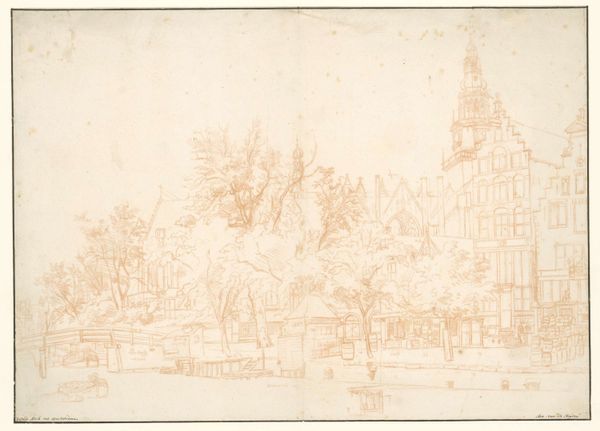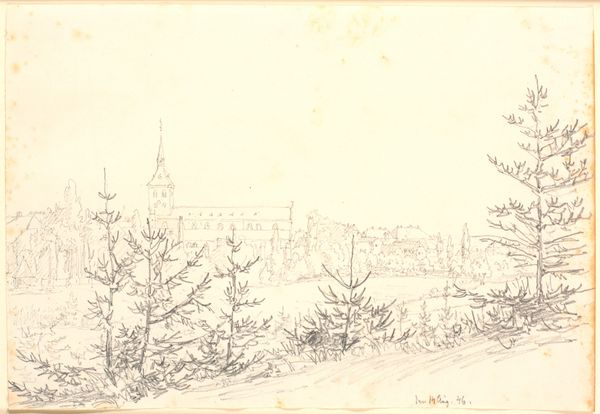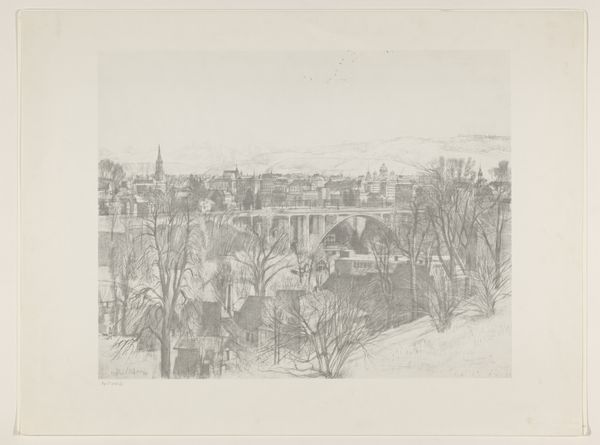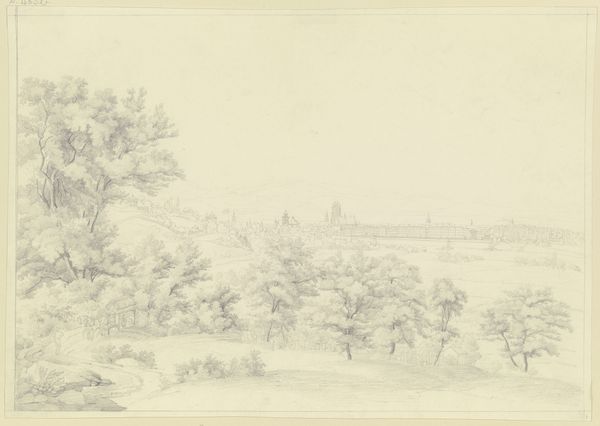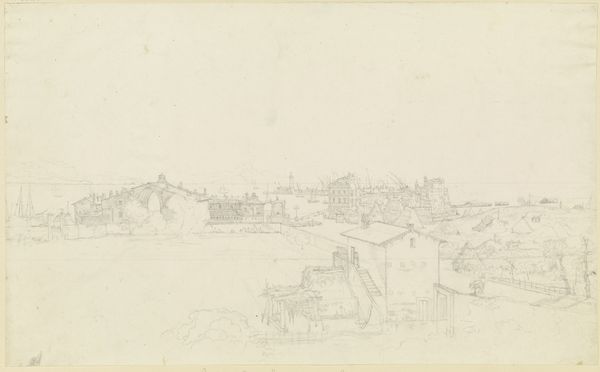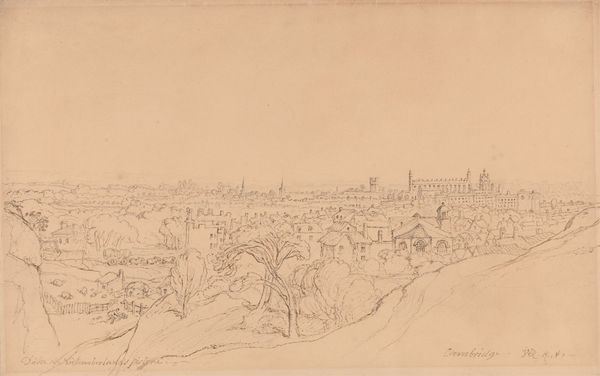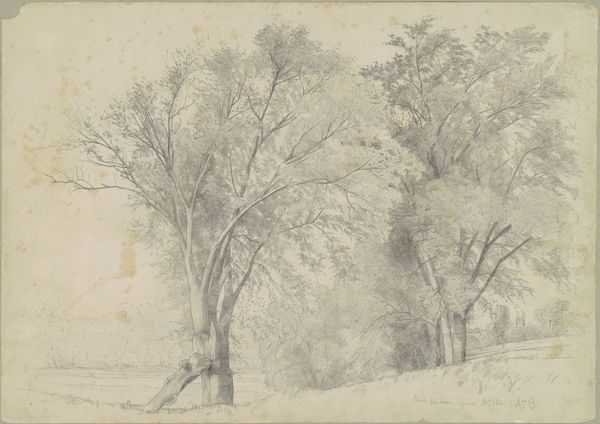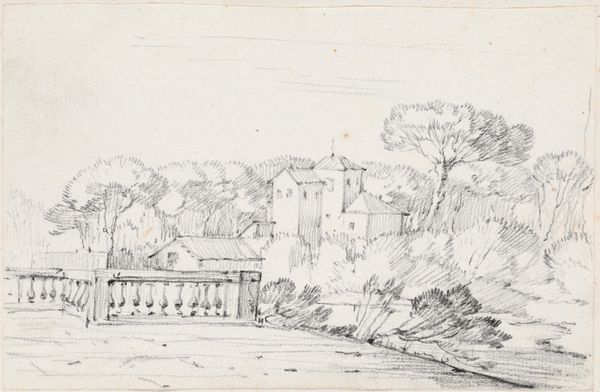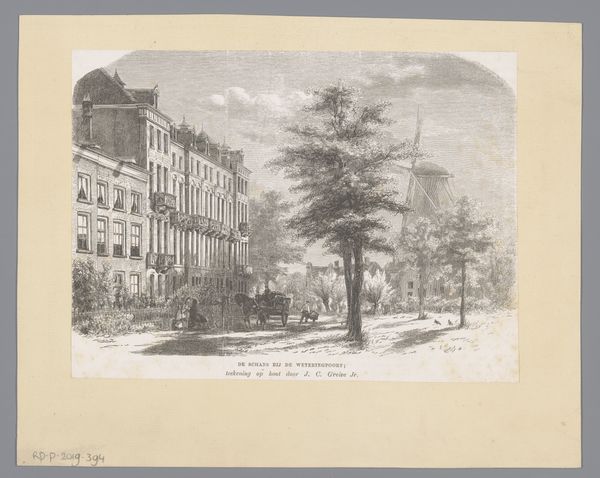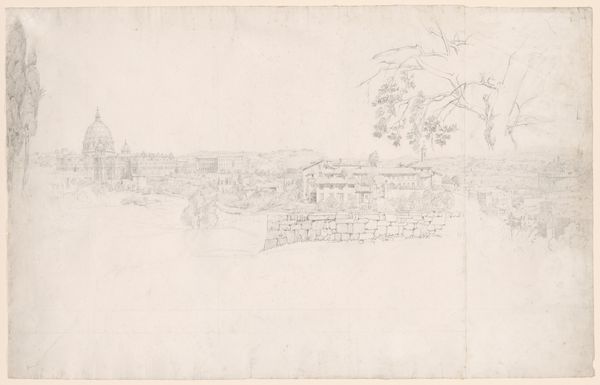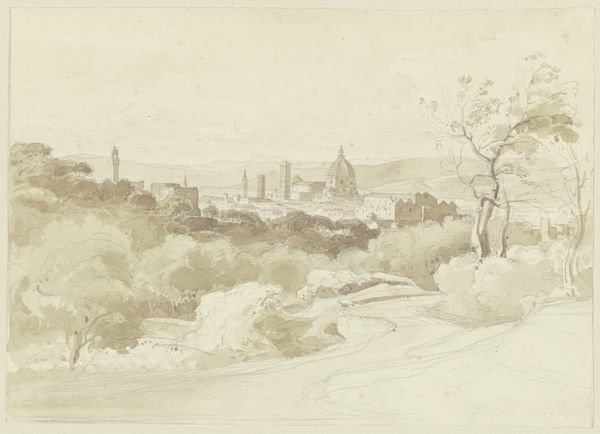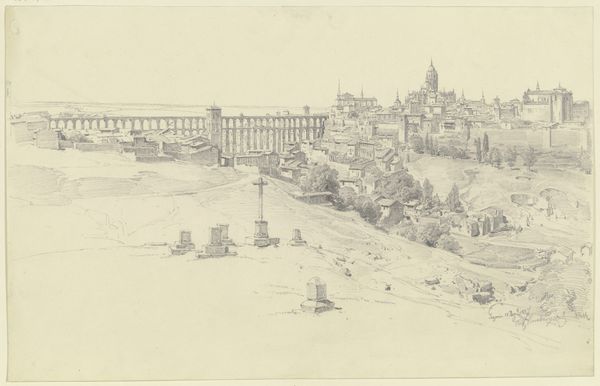
drawing
#
drawing
#
light pencil work
#
ink drawing
#
16_19th-century
#
pen sketch
#
pencil sketch
#
landscape
#
personal sketchbook
#
german
#
ink drawing experimentation
#
pen-ink sketch
#
sketchbook drawing
#
watercolour illustration
#
sketchbook art
Copyright: Public Domain
Curator: At the Städel Museum we find a drawing attributed to Johann Heinrich Hasselhorst titled "Ponte zwischen Ariccia und Albano mit Palazzo Chigi." The artwork appears to be rendered in pencil and possibly ink, capturing a landscape scene. What are your initial impressions? Editor: Immediately, I notice the muted tones and delicate line work; it evokes a feeling of quiet contemplation, a subtle almost ephemeral quality. The entire composition is built up by these gentle gradations and seems almost dreamlike. Curator: Precisely. Hasselhorst masterfully utilizes hatching and cross-hatching to delineate forms and create a sense of depth. Notice how the architectural elements of the Palazzo and bridge are precisely rendered, contrasting with the more loosely sketched foreground of trees and figures. It plays with oppositions; architectural grandeur and pastoral simplicity. Editor: I'm curious about the making of this piece and its implied labor. The softness suggests pencil primarily, but the sharper definition may have been added later by the more resilient ink, potentially used to articulate detail in stages across production? I think understanding this layered technique also deepens our reading of intention. Curator: An interesting point. The very deliberate process in crafting the image also echoes broader social currents; the era of meticulous observation and documentation that influenced landscape aesthetics and fostered precise draughtsmanship as an appreciated skillset. The materiality here is the message itself, mirroring the labor imbued within this artful sketch. Editor: Perhaps. To that end, examining this artwork through its constituent elements – pencil, ink, and paper – illuminates both artisanal approach as well as intended context through subject, like a bridge meant for people. The hand of Hasselhorst shows us both form and content are not separable. Curator: A most astute observation indeed. Hasselhorst, through this understated work, creates a compelling dialogue between nature and man, artifact and scenery, leaving us contemplating their relation through both material and ethereal properties. Editor: Yes, an artistic artifact reminding us that art’s capacity rests upon skillful combination, offering material and symbolic understanding for those keen to delve beneath its calm façade.
Comments
No comments
Be the first to comment and join the conversation on the ultimate creative platform.
